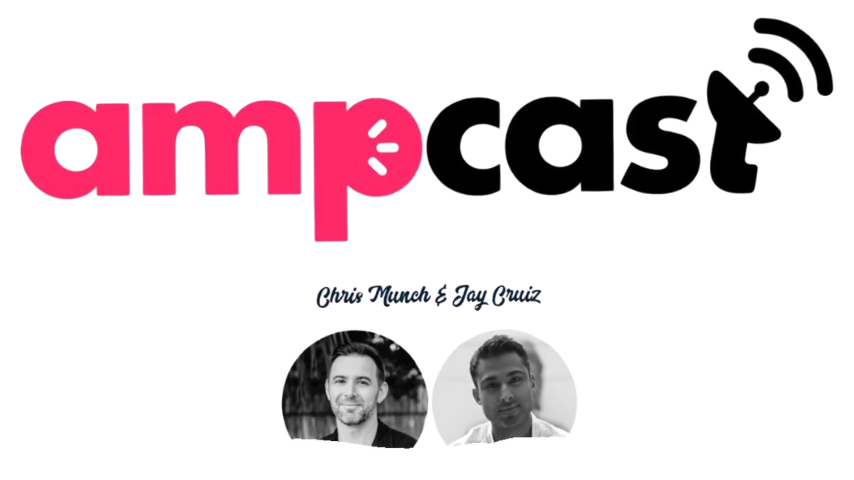The Goldmine Of Long-Tail Keywords: Unleashing Their Power
In this article, you will discover the hidden treasure trove of long-tail keywords and the immense power they hold for your online presence. These specific and highly targeted keywords may not be the first to come to mind, but they have the potential to drive massive amounts of quality traffic to your website. By understanding the significance of long-tail keywords and learning how to use them effectively, you can unlock a wealth of opportunities to boost your search engine rankings and attract the right audience to your online content. Prepare to tap into the goldmine of long-tail keywords and unleash their power for your digital success.

What are Long-Tail Keywords
Definition and Explanation
Long-tail keywords are specific and highly targeted search phrases that are longer and more specific than general keywords. These keywords usually have a lower search volume, but they also have less competition, making it easier for websites to rank higher in search engine results pages (SERPs) when targeting these keywords. Long-tail keywords are typically phrases or questions that users enter into search engines when looking for very specific information, products, or services.
Examples of Long-Tail Keywords
To better understand what long-tail keywords are, here are a few examples:
- “Best vegan restaurants in Los Angeles”
- “How to knit a baby blanket for beginners”
- “Affordable digital marketing services for small businesses”
- “Top-rated hiking trails in the Pacific Northwest”
- “What are the benefits of practicing yoga daily”
These examples demonstrate how long-tail keywords provide more context and specificity, allowing search engines to deliver more relevant results to users.
Why Long-Tail Keywords are Important
Higher Conversion Rates
One of the significant advantages of using long-tail keywords is their potential to drive higher conversion rates. When users search for specific products, services, or information using long-tail keywords, they are more likely to be closer to the purchasing stage of the buyer’s journey. By targeting these specific queries, businesses can attract highly relevant traffic to their websites, resulting in a higher conversion rate.
For instance, if a user searches for “best running shoes for flat feet,” they are actively looking for running shoes specifically designed for their needs. If a business has optimized their website for this long-tail keyword and offers a suitable product, there is a higher likelihood of converting that user into a customer.
Less Competition
Compared to broad or generic keywords, long-tail keywords face less competition. While general keywords may have high search volumes, they often come with intense competition from numerous websites vying for top-ranking positions. On the other hand, long-tail keywords have lower search volumes, causing fewer websites to target them directly. This lower level of competition provides an opportunity for businesses to rank higher in SERPs and attract more targeted traffic.
By focusing on long-tail keywords, businesses can tap into a niche market and gain a competitive advantage, especially if their competitors are mostly targeting broader keywords.
Improved Search Engine Rankings
Long-tail keywords offer an excellent opportunity to improve search engine rankings. Given their specificity and relevance to users’ search queries, search engines perceive websites that optimize their content for long-tail keywords as highly relevant resources.
When businesses create high-quality content centered around long-tail keywords, search engines are more likely to rank them higher in SERPs. This increased visibility helps drive organic traffic to the website and improves overall search engine rankings.
Finding Long-Tail Keywords
Using Keyword Research Tools
Keyword research tools are invaluable when it comes to finding and identifying long-tail keywords relevant to a business’s niche. These tools allow users to discover search terms, analyze search volume, competition, and gain insights into popular trends.
Popular keyword research tools include Google Keyword Planner, SEMrush, Ahrefs, and Moz Keyword Explorer. These tools provide valuable data and suggestions to help businesses identify long-tail keywords that can drive targeted traffic to their websites.
Analyzing Search Queries
Another effective way to find long-tail keywords is by analyzing search queries. By examining the search terms that users commonly utilize to find products or services in a particular industry, businesses can gain insights into the specific needs and desires of their target audience.
One approach to analyzing search queries is to use online forums, social media, and Q&A platforms like Quora and Reddit. These platforms can provide valuable information about the questions and concerns users have within a specific industry, thereby revealing potential long-tail keywords to target.
Mining User-generated Content
User-generated content, such as customer reviews, feedback, and comments, can be an excellent source of long-tail keywords. Customers often use specific language and phrases when leaving reviews or discussing products or services they have used.
By mining user-generated content, businesses can uncover long-tail keywords that align with the language their target audience uses. This can provide valuable insights into the exact words and phrases potential customers are using when searching for products or services, allowing businesses to optimize their content accordingly.
Understanding Search Intent
Navigational Search Intent
Navigational search intent refers to when a user is looking for a specific website or web page. They may already know the brand or business name and want to navigate directly to their website. Optimizing for navigational search intent with long-tail keywords would involve incorporating the brand name or variations of it within the content.
For example, if a user searches for “Nike official website,” a business selling Nike products can optimize their content to target this specific long-tail keyword. By providing relevant information and ensuring a seamless user experience, they increase the chances of attracting users who are already familiar with the brand.
Informational Search Intent
Informational search intent occurs when a user is seeking information or answers to specific questions. They may be looking for explanations, guides, how-to articles, or general knowledge about a particular topic. Long-tail keywords targeting informational search intent should focus on answering questions and providing valuable information.
For instance, if a user searches for “how to bake a chocolate cake from scratch,” a baking blog can optimize their content to target this long-tail keyword. By creating a comprehensive guide with step-by-step instructions and accompanying visuals, they can attract users who are seeking that specific information.
Transactional Search Intent
Transactional search intent signifies that a user is ready to make a purchase. They have already gone through the research phase and are actively looking to buy a specific product or service. Long-tail keywords targeting transactional search intent should be focused on product names, features, discounts, or other purchasing indicators.
For example, if a user searches for “best price on MacBook Pro 2021,” an electronics retailer can optimize their content to target this long-tail keyword. By offering competitive prices, highlighting discounts, and providing detailed product information, they increase the likelihood of converting these searching users into customers.

Optimizing Content with Long-Tail Keywords
Placement in Page Titles and Meta Descriptions
To optimize content with long-tail keywords, it is crucial to include them strategically in page titles and meta descriptions. These elements appear in search engine results and help users decide whether or not to click on a particular link.
By incorporating long-tail keywords naturally and informatively in page titles and meta descriptions, businesses can increase the visibility and click-through rates of their webpages. This optimization technique ensures that the content is both targeted and appealing to users in search engine results.
Incorporation in Heading Tags
Heading tags (H1, H2, H3, etc.) are essential for organizing content and providing structure. Long-tail keywords can be incorporated within heading tags to highlight the main points and topics discussed in the content.
By using long-tail keywords in heading tags, businesses can further optimize their content for both search engines and users. This technique improves the readability and scannability of the content while signaling its relevance to search engines.
Integration in Body Text and Alt Text
Long-tail keywords should be naturally integrated into the body text of the content. It is important to ensure that the keywords flow smoothly within the overall context and provide valuable information to the reader.
Alt text, or alternative text, is used to describe images on webpages. Including long-tail keywords in alt text helps search engines understand the context and subject matter of the images, further enhancing the optimization of the content.
By strategically incorporating long-tail keywords throughout the body text and alt text, businesses can improve the visibility and relevance of their content for search engines and users alike.
Avoiding Keyword Stuffing
Importance of Natural Language
Keyword stuffing involves excessively and unnaturally incorporating keywords into content with the hopes of manipulating search engine rankings. However, search engines have become more sophisticated and now prioritize high-quality and user-friendly content.
To avoid keyword stuffing, it is essential to use natural language and focus on providing valuable information to the reader. Long-tail keywords should be used in a way that seamlessly integrates into the content, ensuring that it remains engaging, informative, and relevant.
Maintaining Keyword Relevance
While it is important to incorporate long-tail keywords into content, it is equally crucial to ensure their relevance. Long-tail keywords should accurately represent the topic or subject matter of the content.
By maintaining keyword relevance, businesses can optimize their content for search engines without compromising the user experience. This approach enhances the overall quality and credibility of the content, leading to better rankings and user engagement.

Monitoring and Analyzing Long-Tail Keywords
Using Analytics Tools
Analytics tools, such as Google Analytics, provide valuable insights into the performance of long-tail keywords. These tools allow businesses to track key metrics like organic traffic, bounce rates, time on page, and conversions attributed to specific long-tail keywords.
By utilizing analytics tools, businesses can understand how their long-tail keywords are performing and make data-driven decisions to optimize their content further.
Tracking Keyword Performance
It is crucial to regularly monitor and track the performance of long-tail keywords. By identifying which keywords are driving the most traffic, conversions, and engagement, businesses can refine their content strategy and focus on those that yield the best results.
Tracking keyword performance allows businesses to adapt and optimize their long-tail keyword strategy over time, ensuring continued success in driving targeted traffic and achieving business goals.
Identifying Trends and Opportunities
Analyzing long-tail keywords can also help businesses identify emerging trends and new opportunities within their industry. By keeping an eye on search volume, related keywords, and user behavior, businesses can proactively adapt their content to meet changing user demands and stay ahead of the competition.
Identifying trends and opportunities allows businesses to position themselves strategically, target new market segments, and capitalize on emerging customer needs.
Long-Tail SEO Strategies
Creating Specific Landing Pages
Creating specific landing pages optimized for long-tail keywords is an effective long-tail SEO strategy. These landing pages can be tailored to cater to the specific needs and intents of users searching for those long-tail keywords.
By providing highly relevant and focused content on dedicated landing pages, businesses can attract targeted traffic, improve user experience, and increase conversion rates.
Targeting Local Long-Tail Keywords
For businesses catering to a specific region or locality, targeting local long-tail keywords is highly beneficial. Local long-tail keywords include location-specific phrases to cater to users searching for products or services in a particular area.
By optimizing content with local long-tail keywords, businesses can ensure that their website appears in local search results, improving visibility among their target audience and driving relevant local traffic to their site.
Leveraging Long-Tail Keywords in E-commerce
In the realm of e-commerce, leveraging long-tail keywords is crucial for product optimization. Long-tail keywords can highlight specific product features, benefits, or use cases, increasing the chances of appearing in search results when users search for those specific details.
By incorporating long-tail keywords strategically in product descriptions, titles, and attributes, e-commerce businesses can improve product visibility, attract highly targeted traffic, and boost sales.
Long-Tail Keywords in Voice Search
Impact of Voice Search on Keyword Usage
With the rise of voice-enabled devices and virtual assistants like Siri, Alexa, and Google Assistant, voice search has become increasingly popular. Voice search queries tend to be longer and more conversational, aligning closely with the nature of long-tail keywords.
As a result, businesses need to optimize their content for voice search by incorporating long-tail keywords that match the natural language used in voice queries. This optimization ensures that businesses remain relevant and visible in the evolving landscape of search.
Optimizing for Voice Search Queries
To optimize content for voice search queries, businesses should focus on using natural, conversational language and incorporating long-tail keywords that align with common voice search queries. Anticipating the specific questions or phrases users might use when conducting voice searches allows businesses to optimize their content and increase their chances of appearing in voice search results.
By adapting content to suit voice search, businesses can stay ahead of the curve and effectively engage with users who prefer voice-activated searches.
Case Studies: Success with Long-Tail Keywords
Business A: How Long-Tail Keywords Increased Organic Traffic
Business A, a gourmet coffee roastery, implemented a long-tail keyword strategy to increase their organic traffic. By conducting thorough keyword research and identifying specific long-tail keywords related to their products, such as “organic fair-trade coffee beans” and “best coffee beans for pour-over brewing,” they optimized their website content accordingly.
As a result, Business A saw a significant increase in organic traffic, as their website started appearing higher in SERPs for those targeted long-tail keywords. This increase in relevant traffic also led to a higher conversion rate, translating into more sales for the business.
Business B: Boosting Conversions with Long-Tail Keywords
Business B, an online clothing retailer, focused on leveraging long-tail keywords to boost their conversion rates. By analyzing search queries and user-generated content, they identified specific long-tail keywords related to their clothing categories, such as “floral summer dress for weddings” and “comfortable maternity activewear.”
Business B optimized their product descriptions, titles, and attributes with these long-tail keywords to ensure their clothing appeared in search results when users were looking for those specific types of apparel. This strategy resulted in an increase in targeted traffic, improved user engagement, and ultimately, higher conversion rates for the business.
In conclusion, long-tail keywords are a goldmine of opportunity when it comes to improving organic traffic, conversion rates, and search engine rankings. By understanding their importance, effectively finding and analyzing them, optimizing content, and monitoring their performance, businesses can unlock the power of long-tail keywords and achieve online success.




